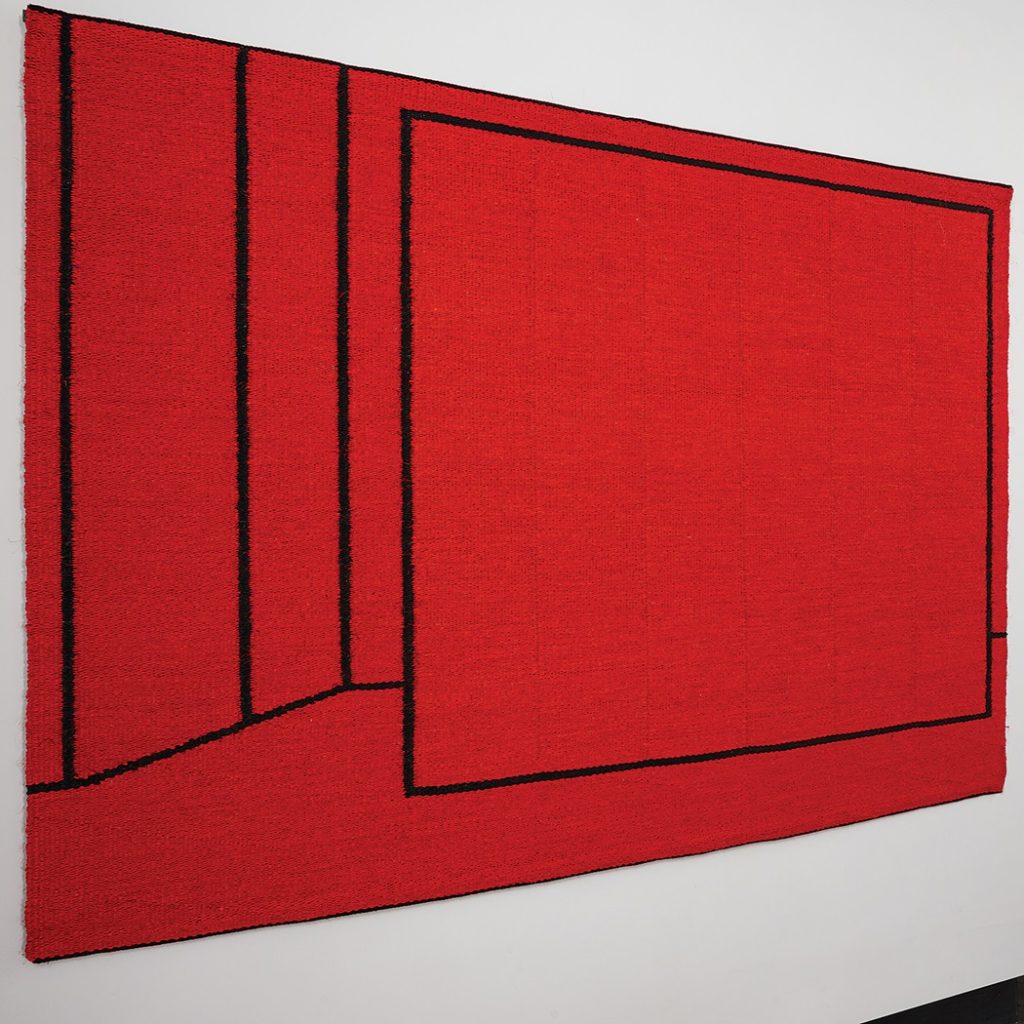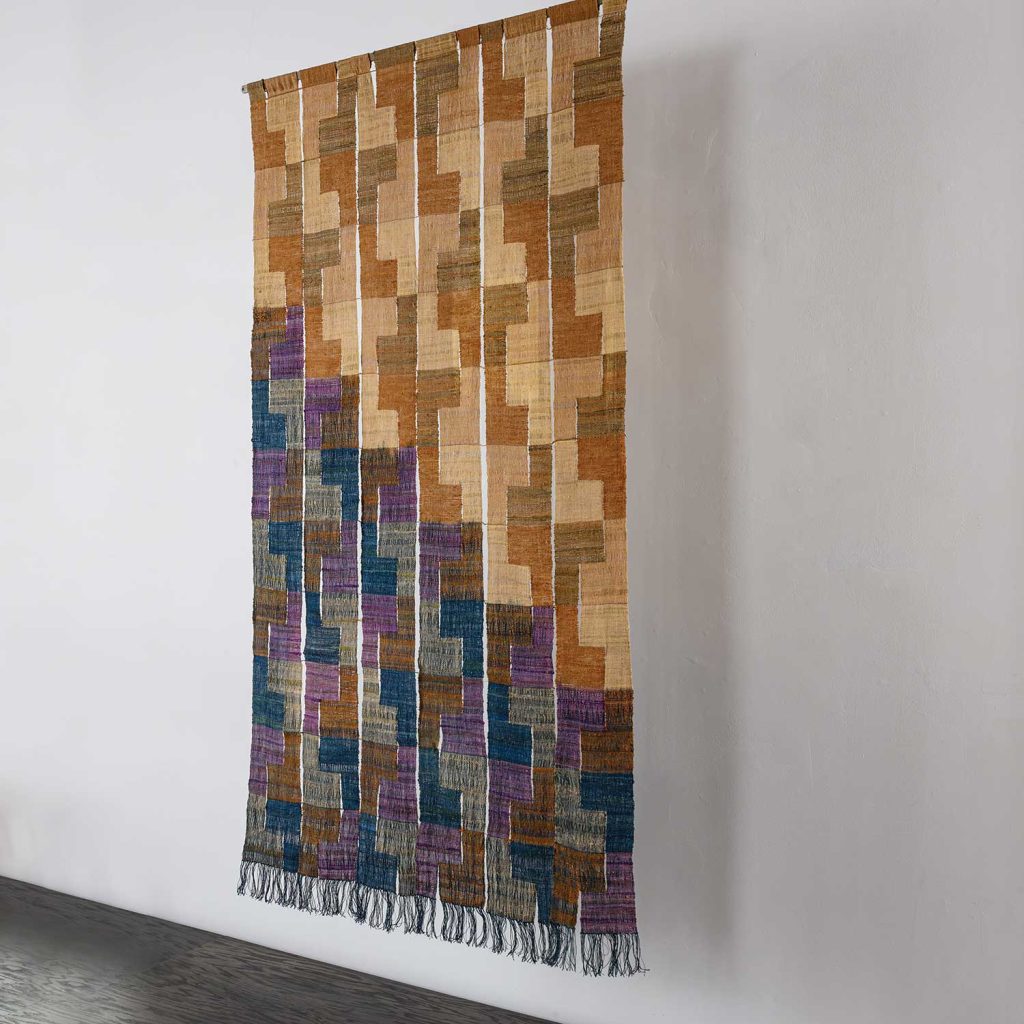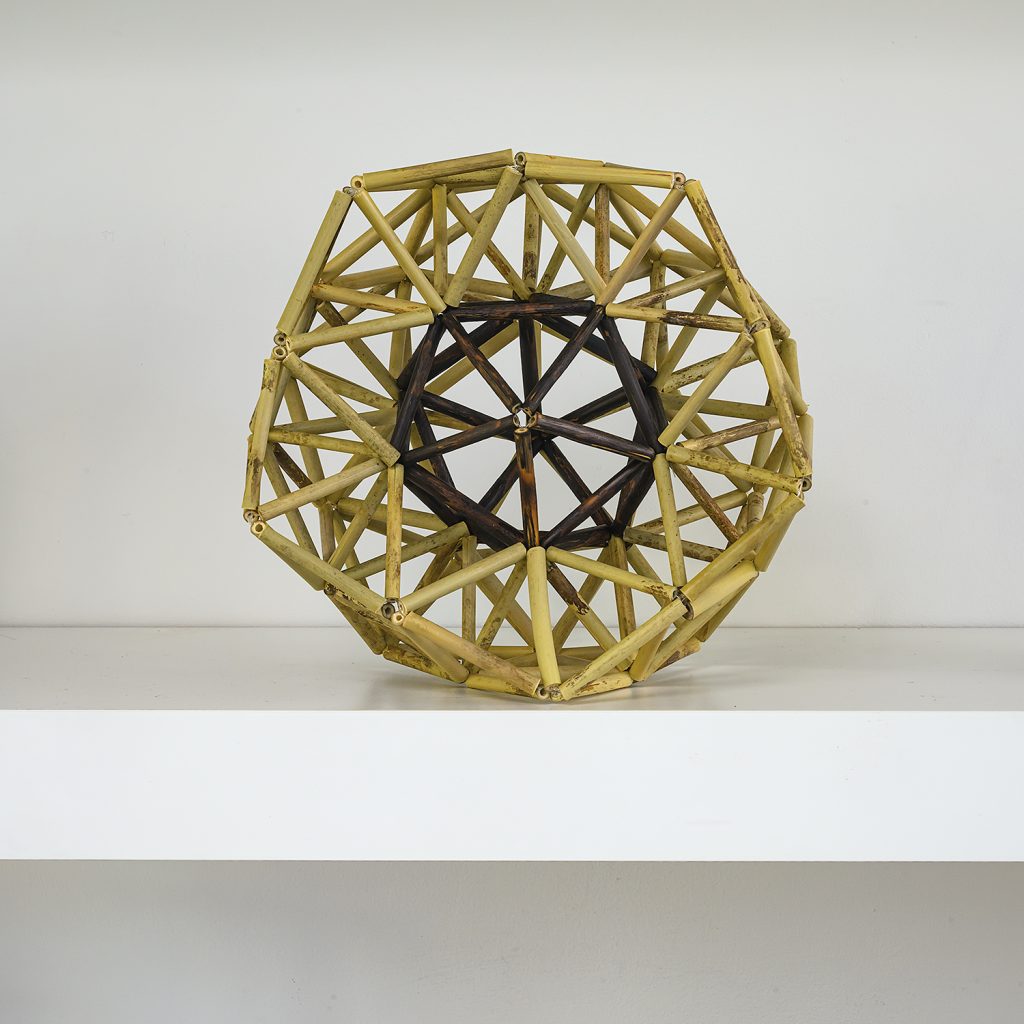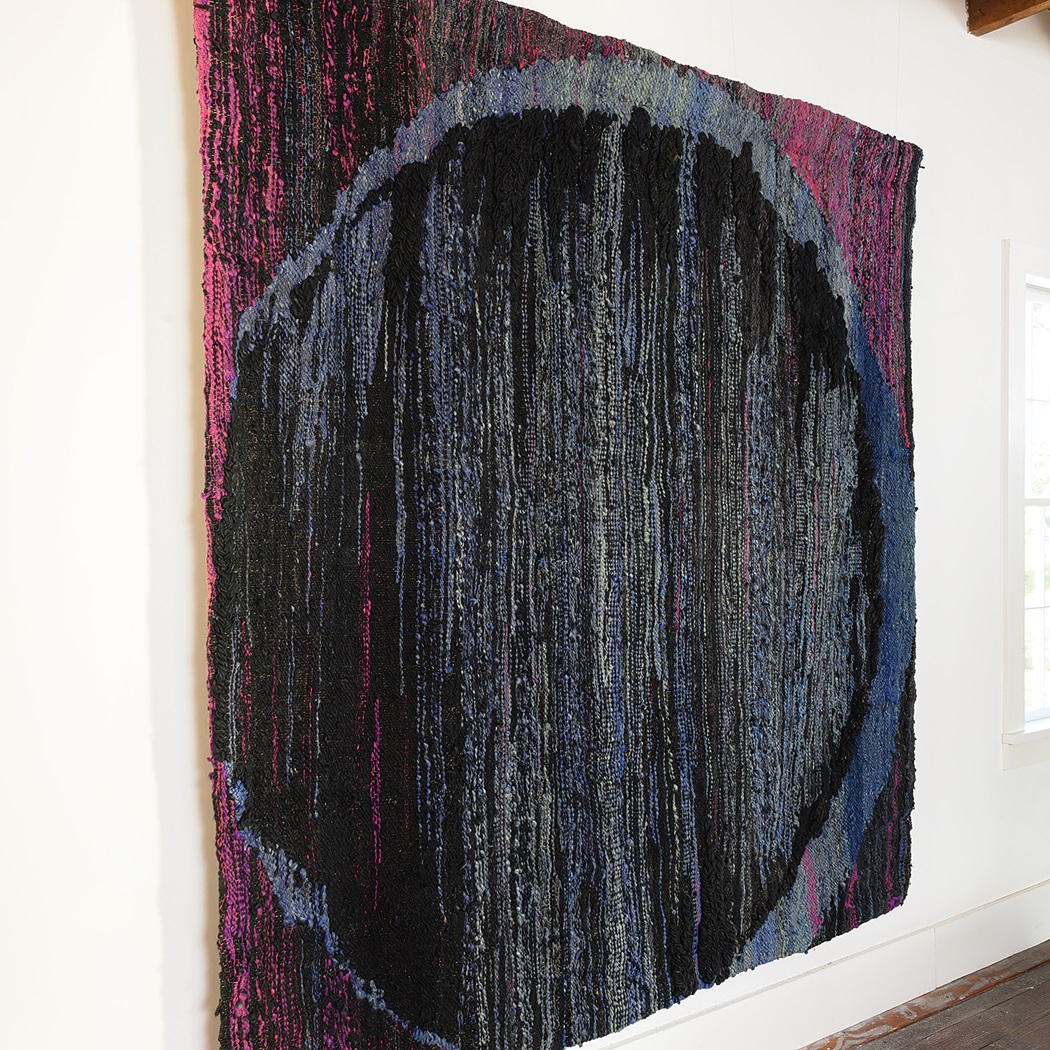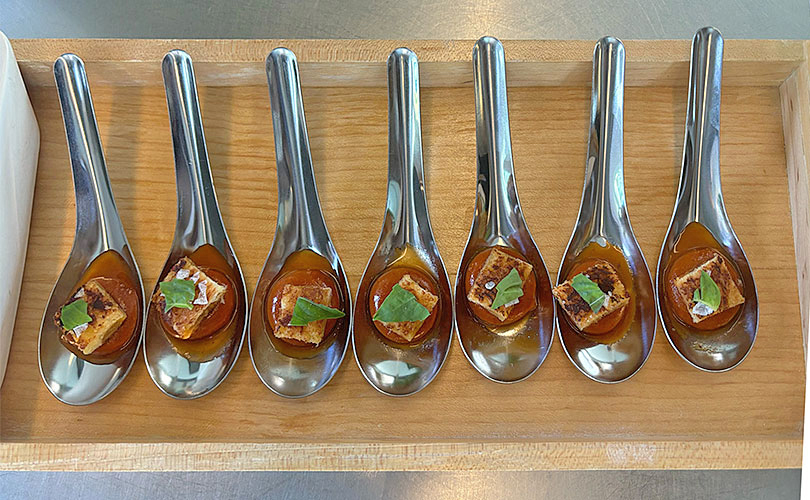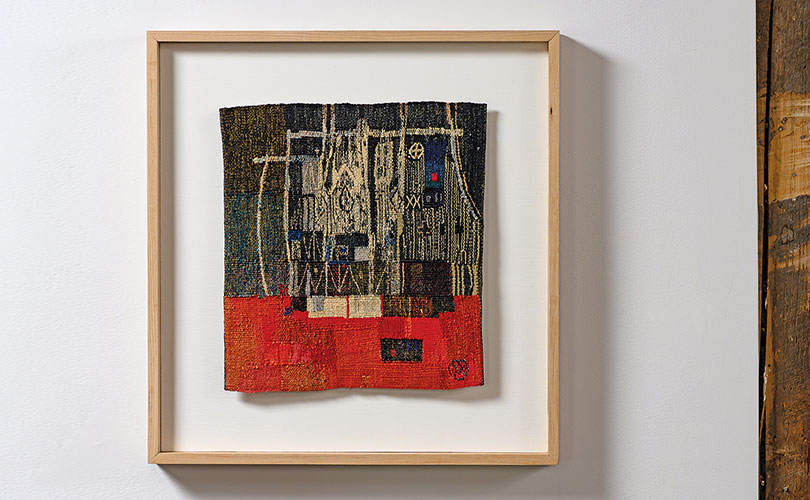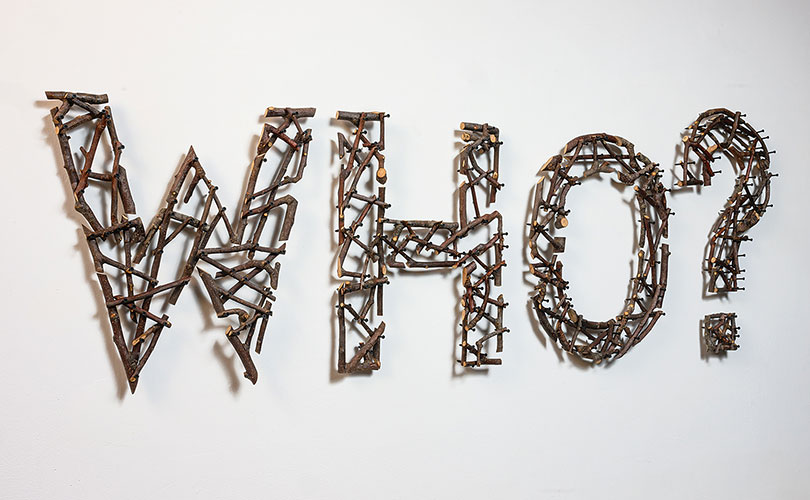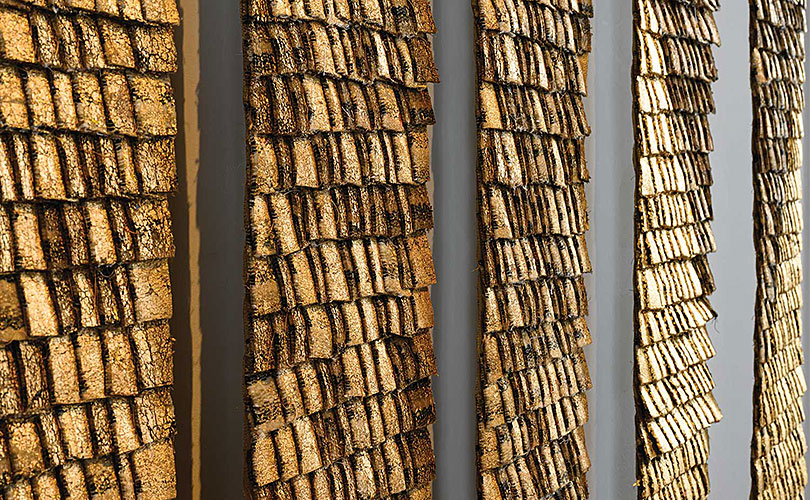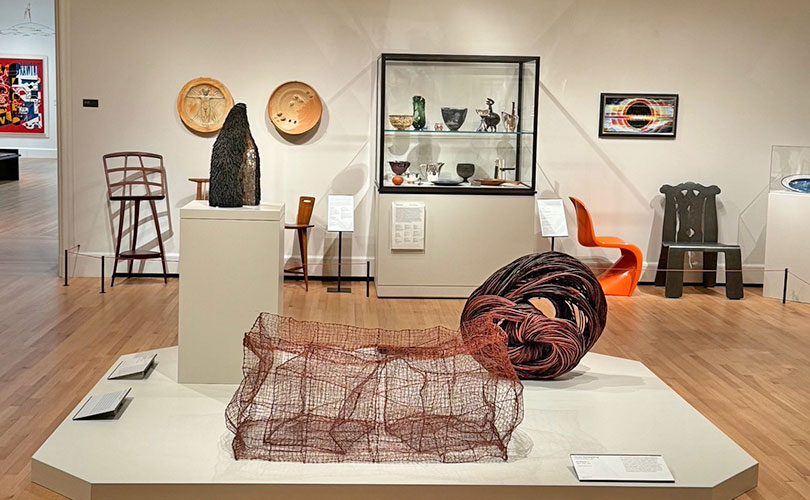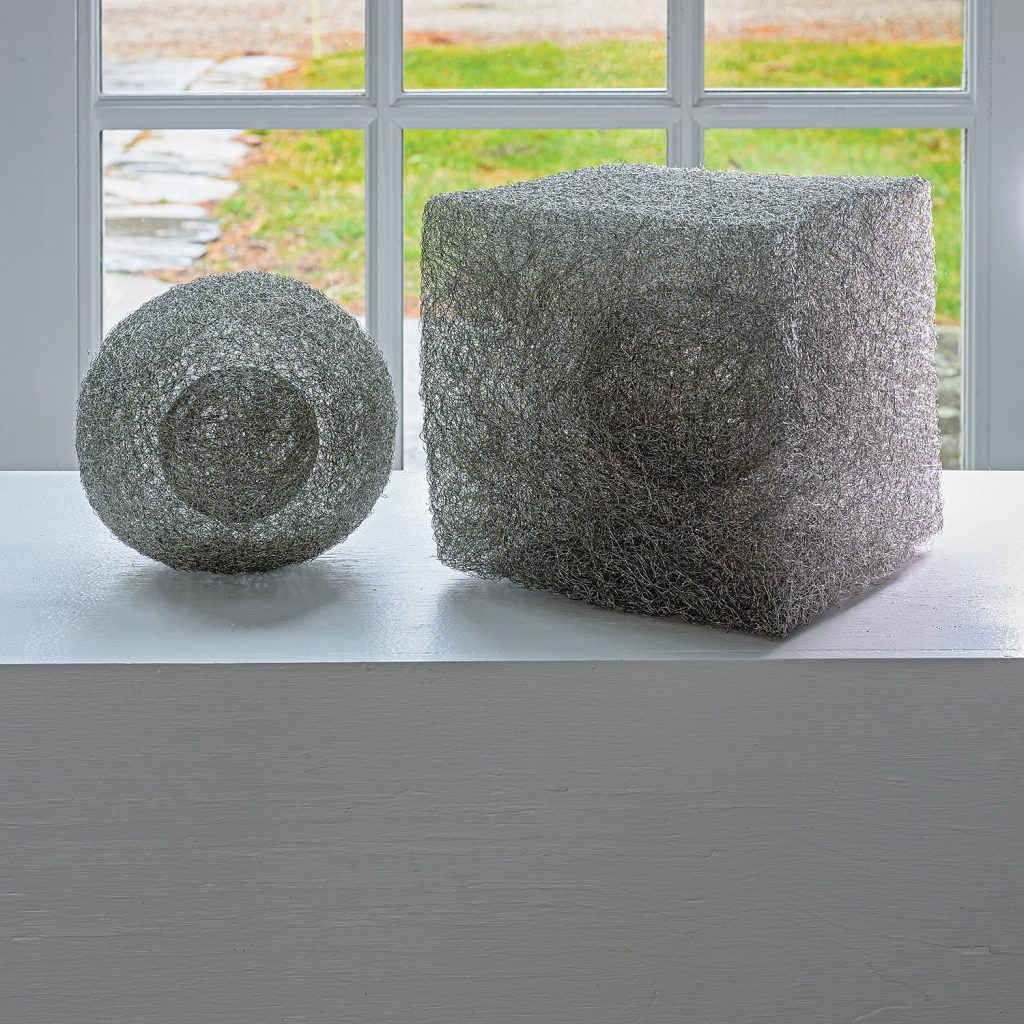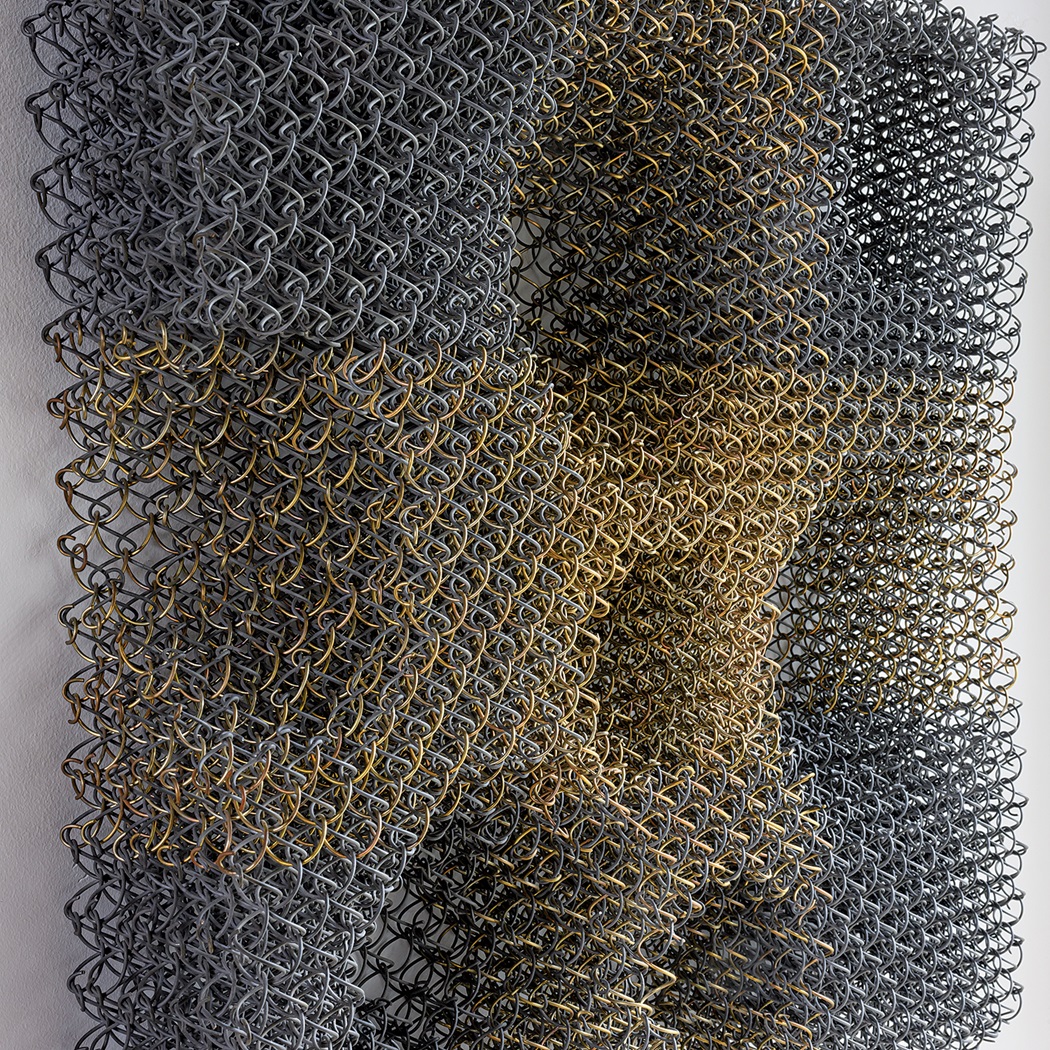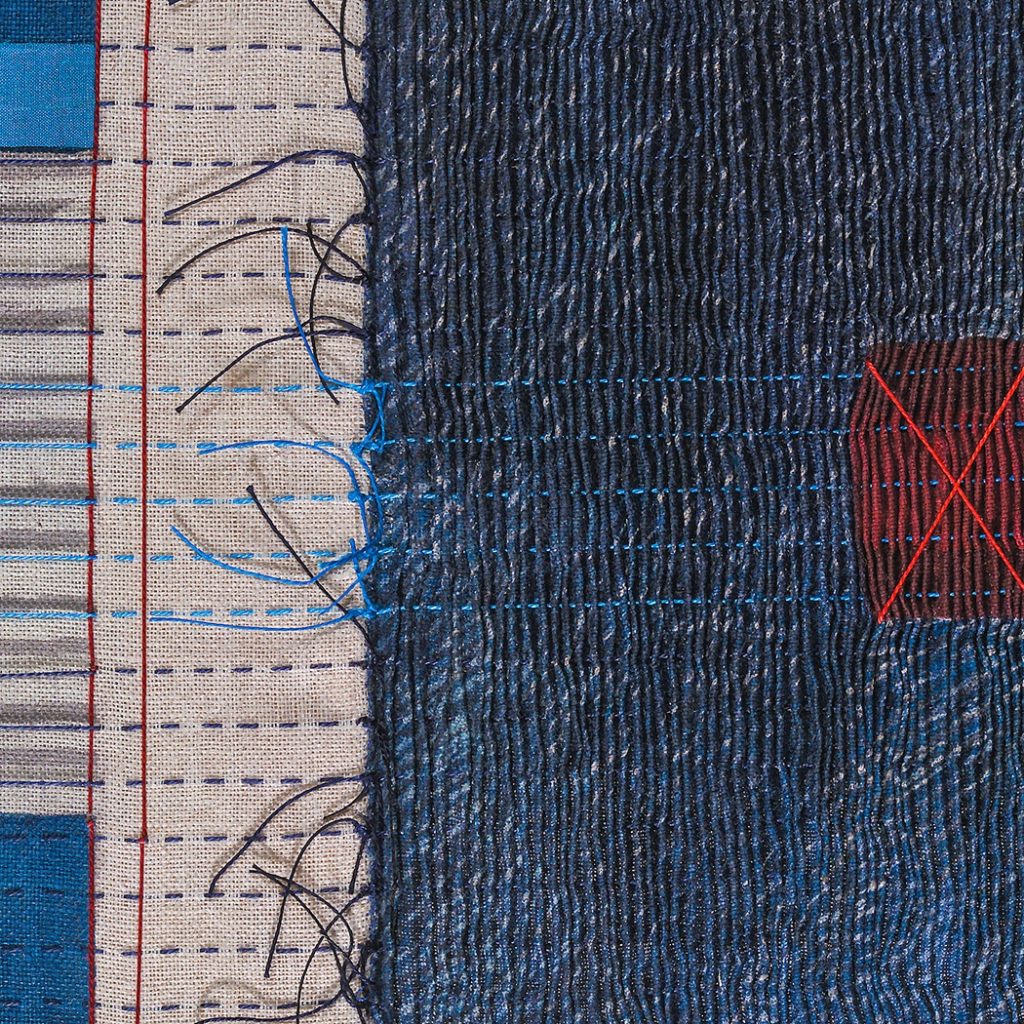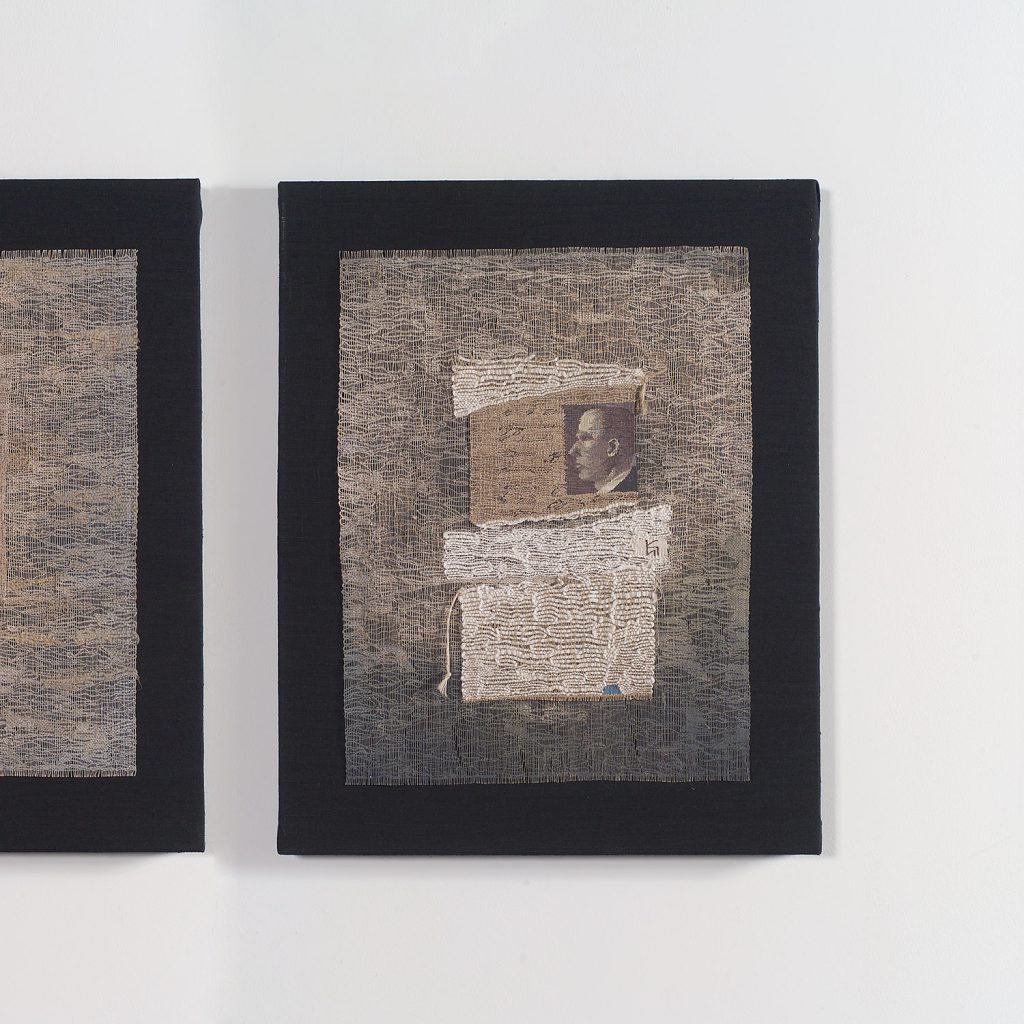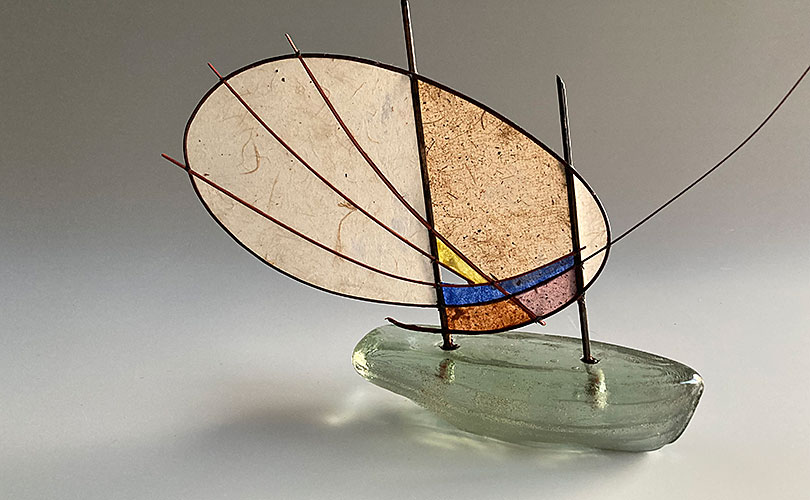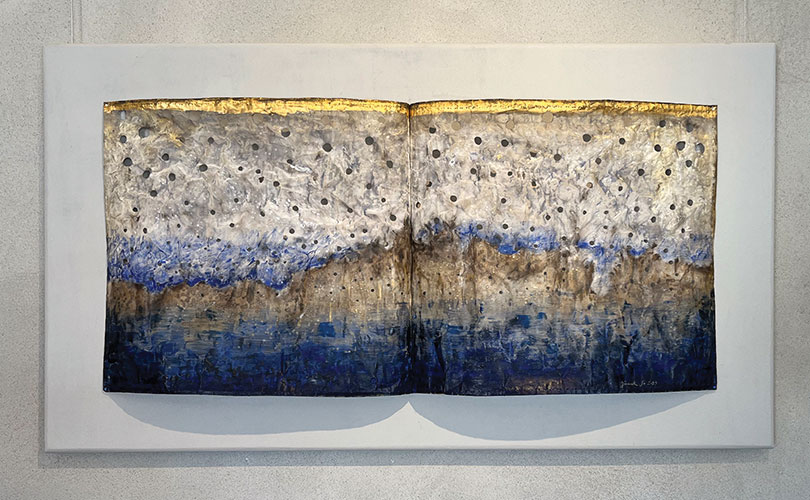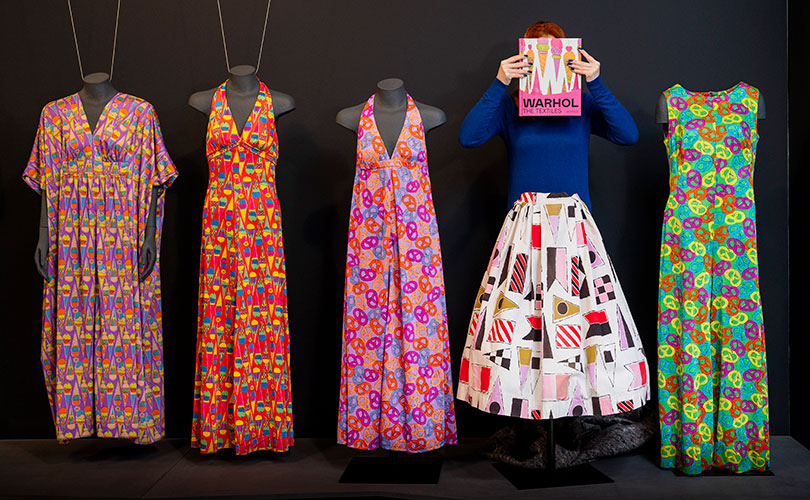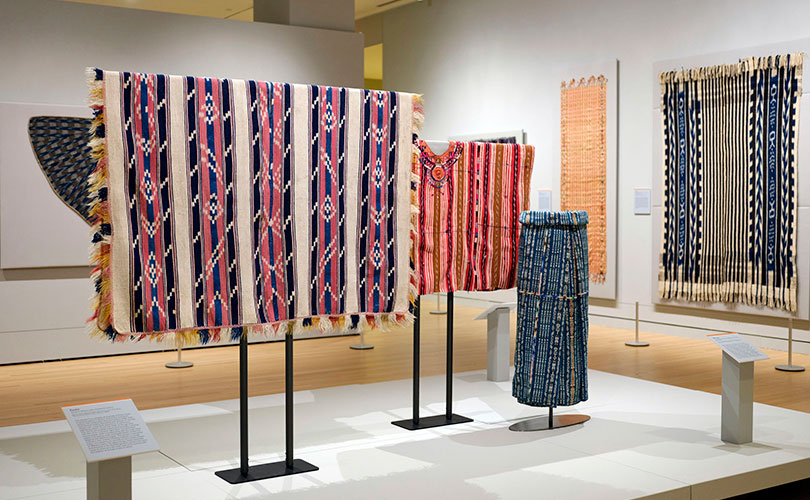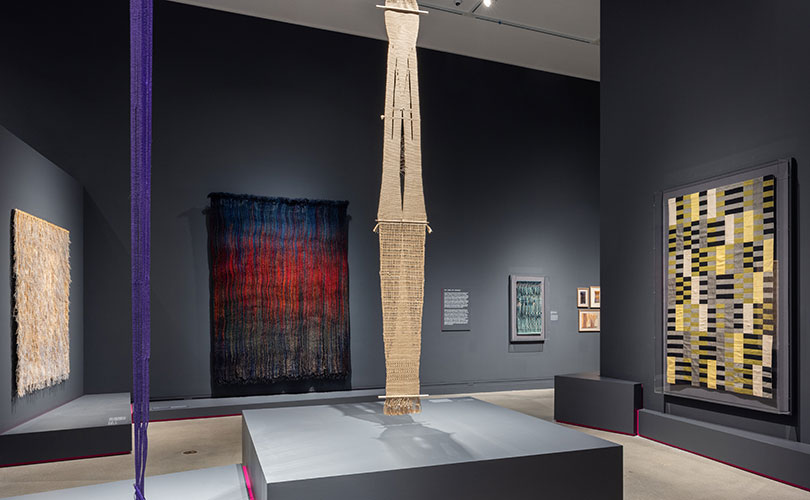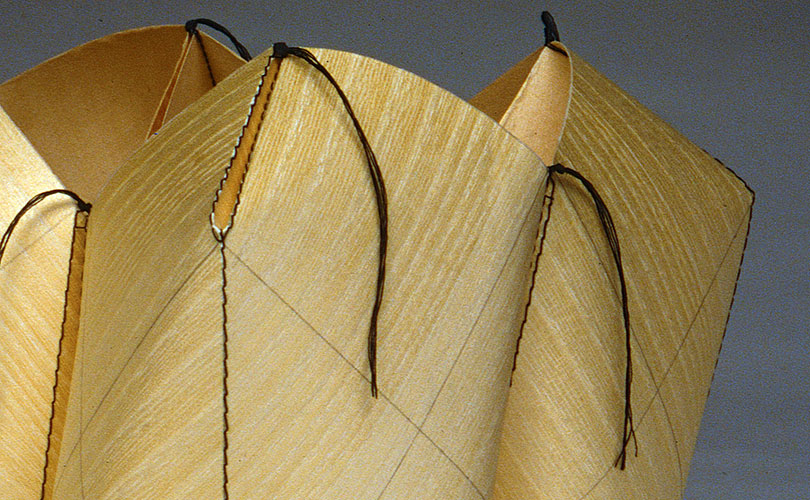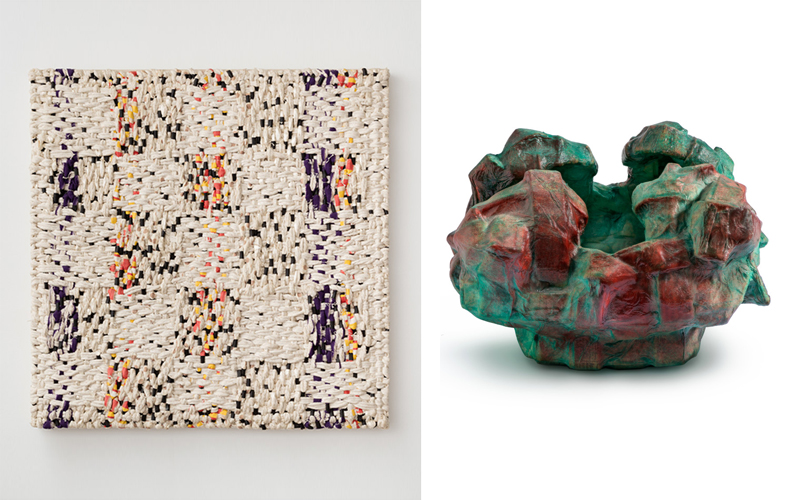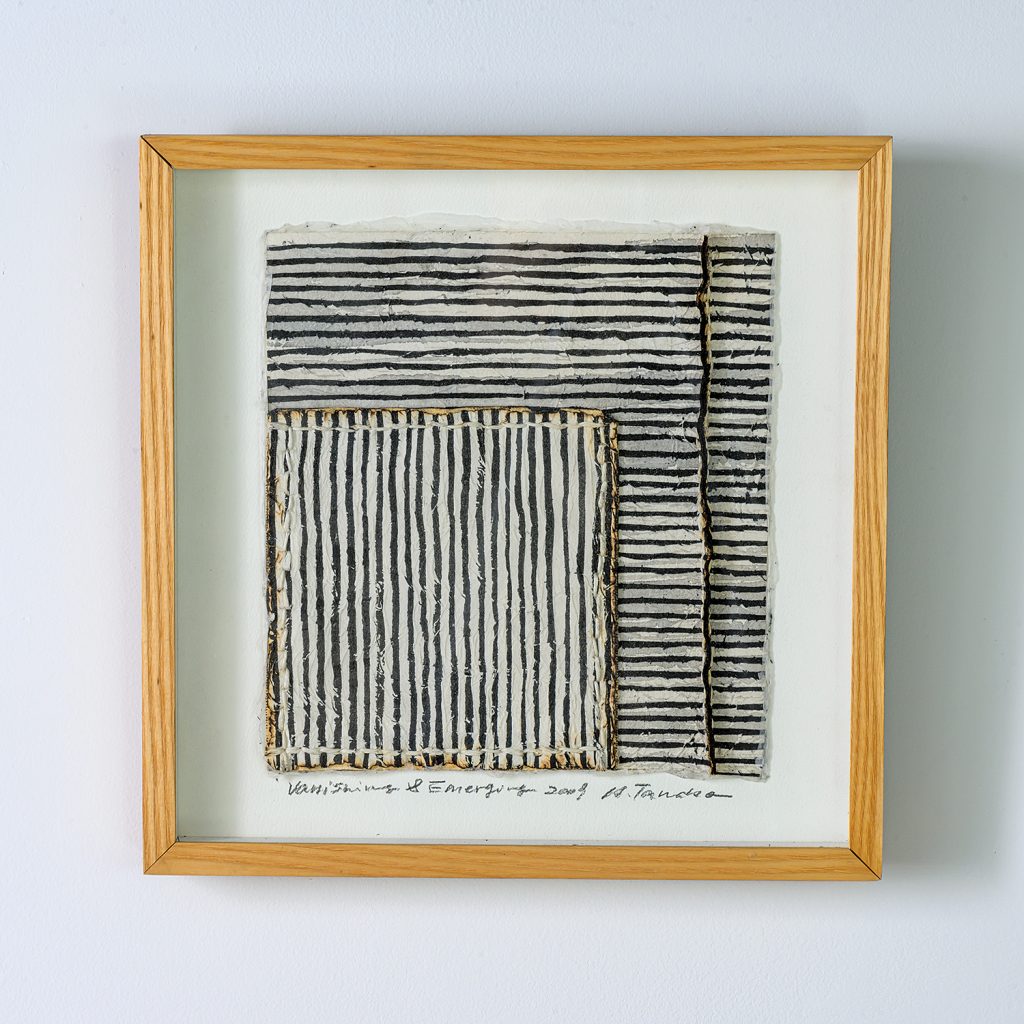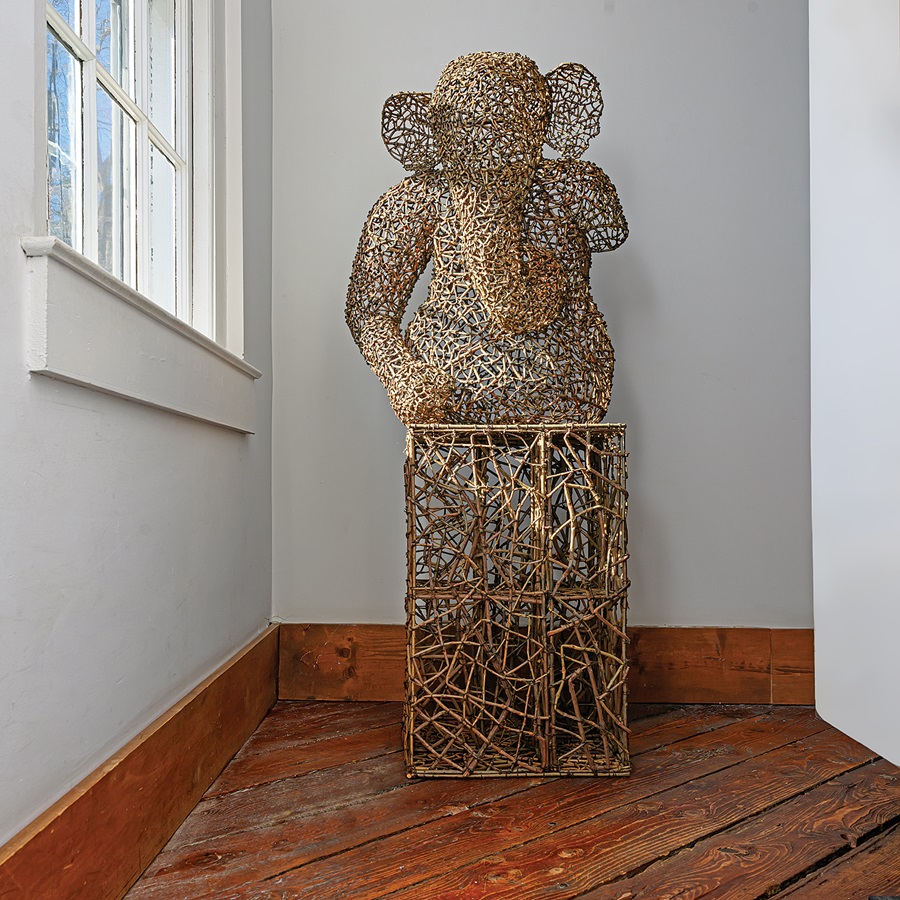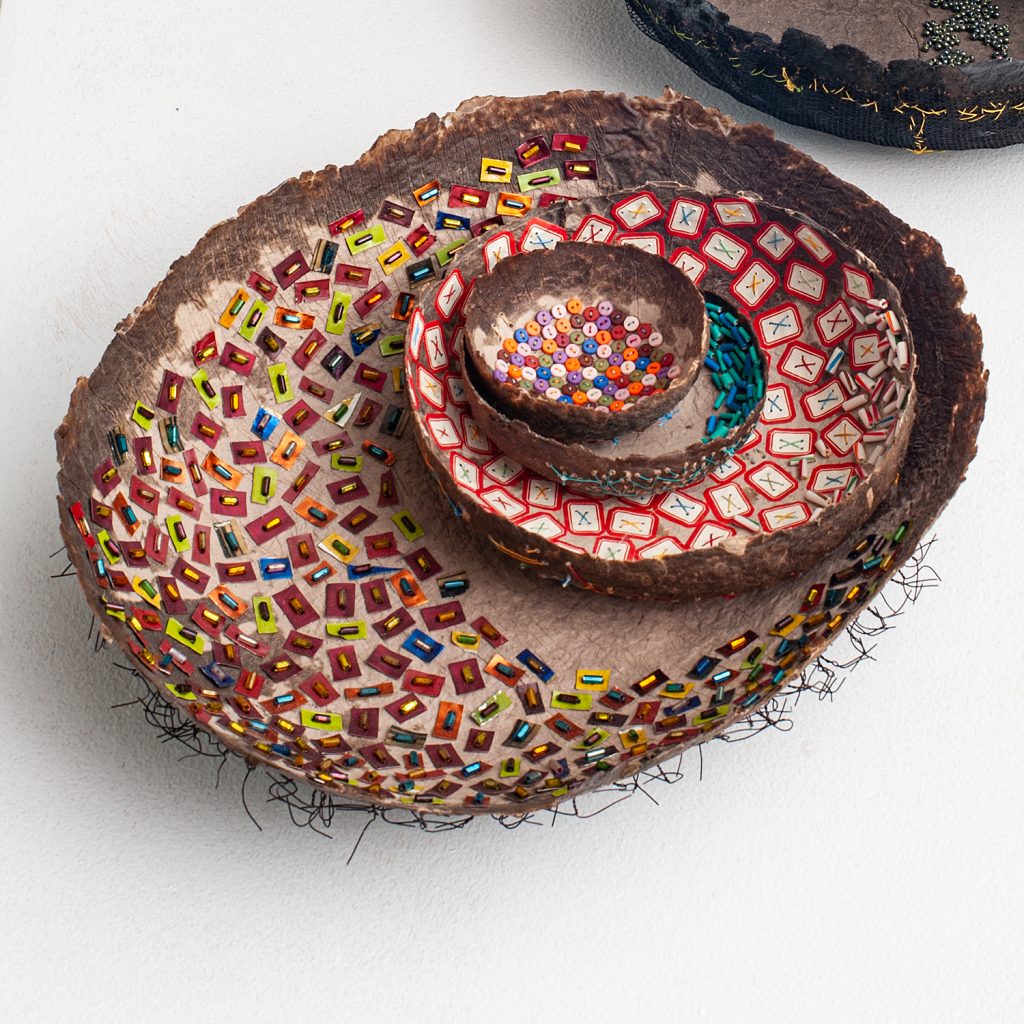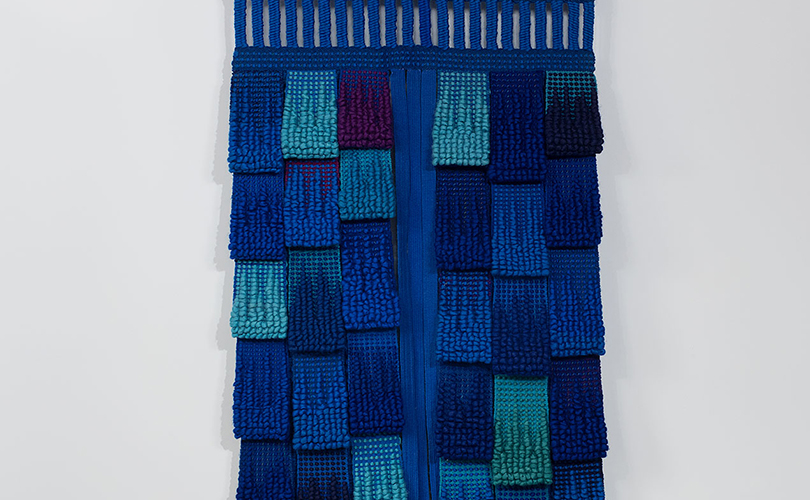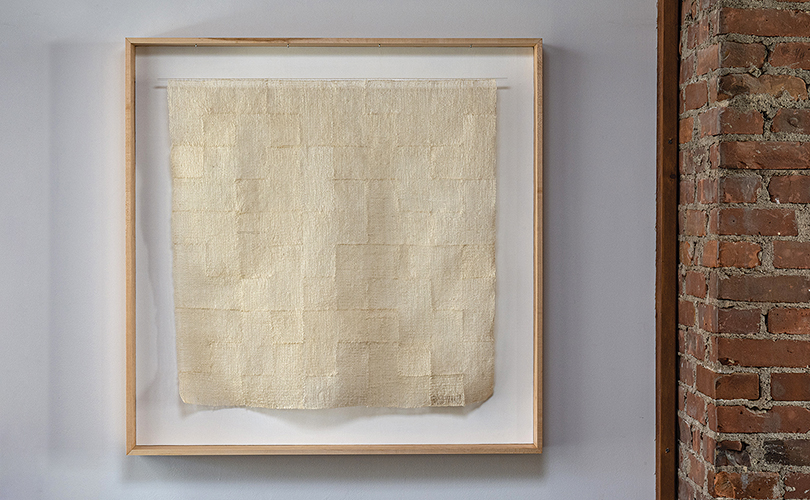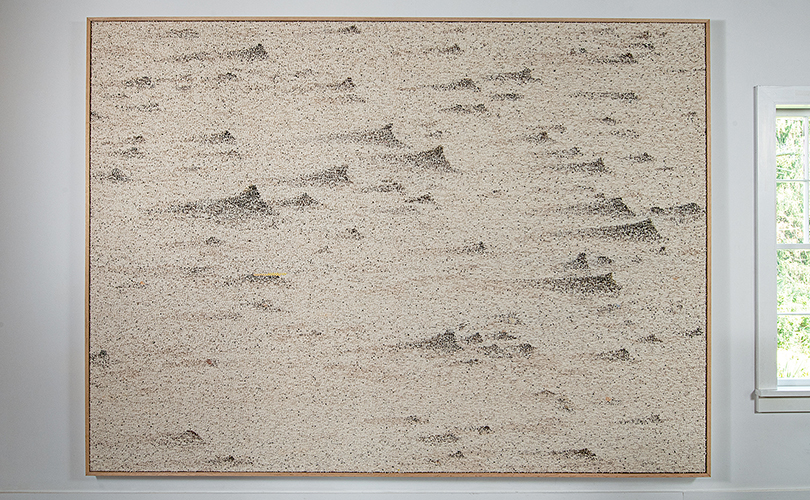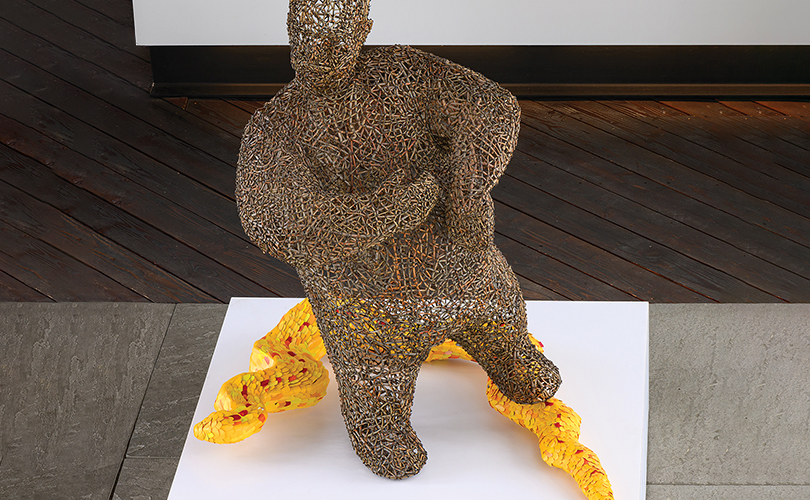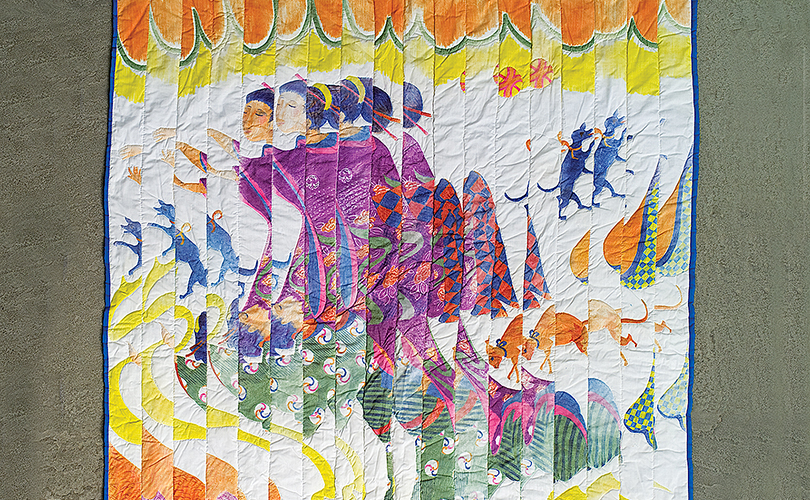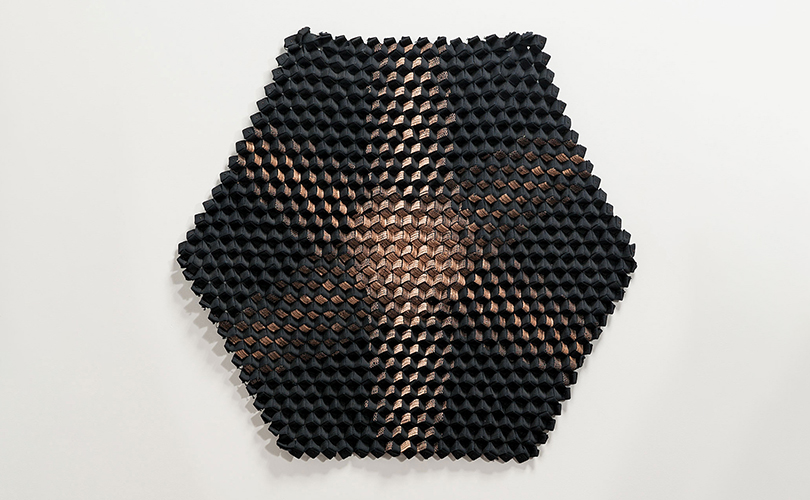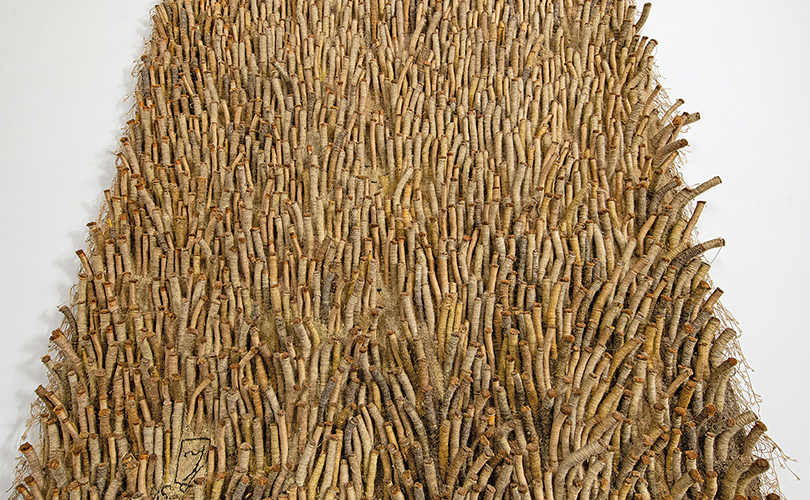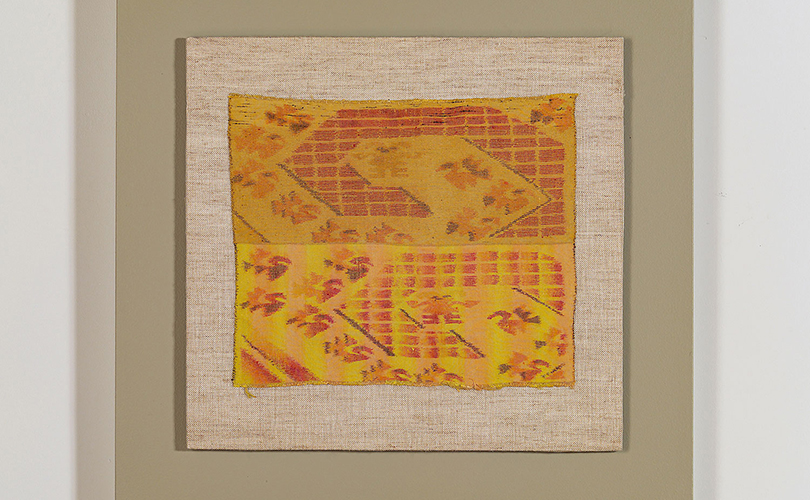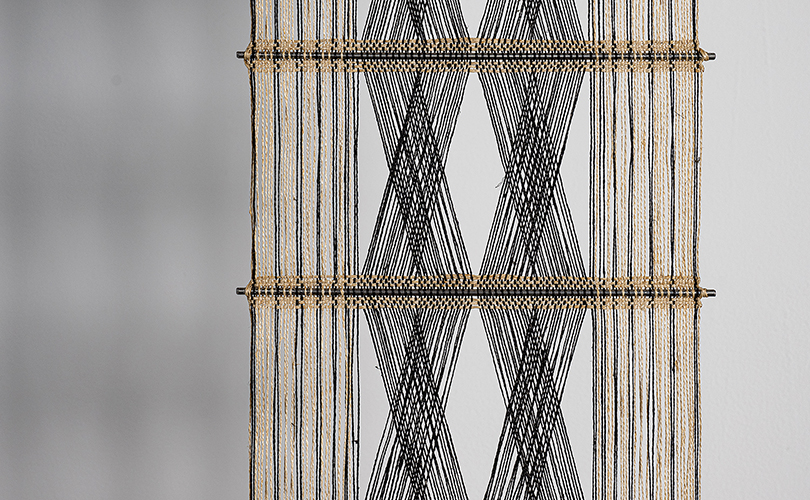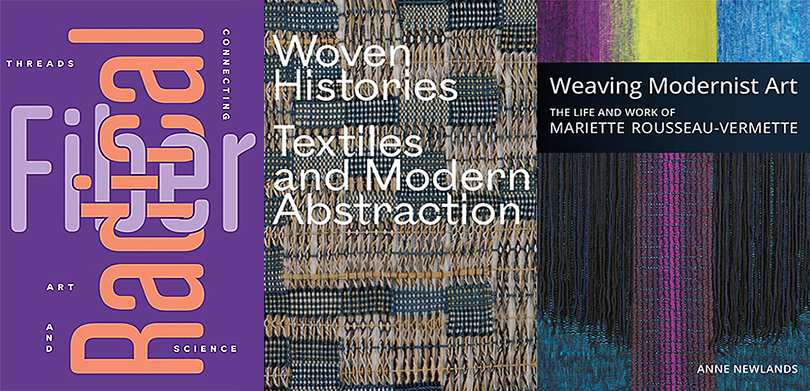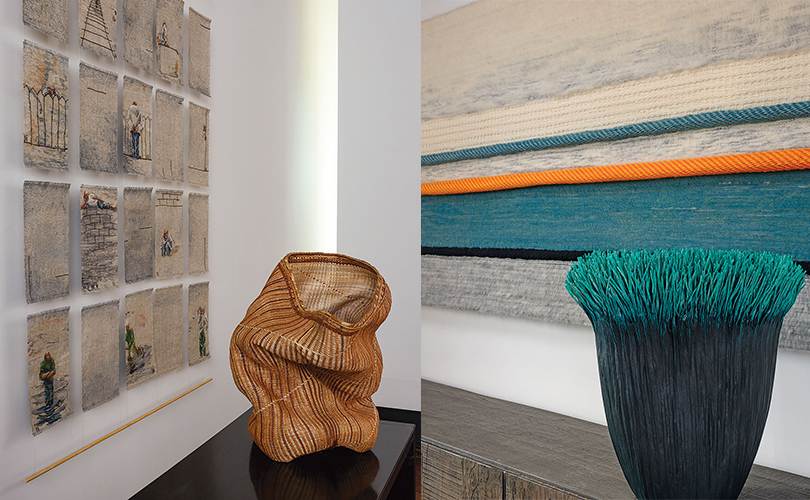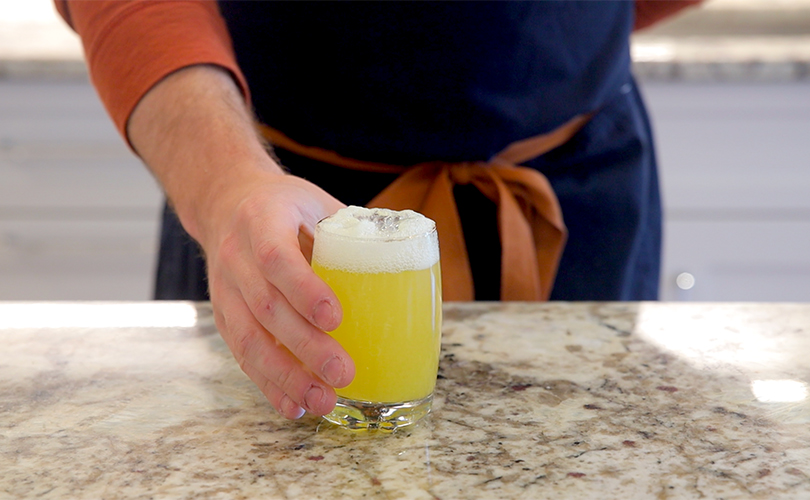
1cy Azul Y Negr, Carolina Yrarrázaval, rayon, cotton, 116″ x 40.5″, 2003 Photo by Tom Grotta
Twenty international women artists of substance and significance are heralded in Impact: 20 Women Artists to Collect one of the groupings in Ways of Seeing at browngrotta arts this Fall. Ways of Seeing explores the varied ways in which people curate their art collections. Collecting by artist, including by race, sexual identity, country of origin, or as in Impact, by gender, is one of the ways in which collections are assembled.

131k Monofilament, nylon monofilament, 4-layered weave, tubular weave, 32” x 7” x 6”. Photo by Tom Grotta
In 2019, Artsy, an online platform we collaborate with, hosted 3,999 galleries. Only 8% of these galleries represented more women artists than men. browngrotta arts is among that 8%, promoting a diverse array of exceptional women artists beyond the group featured in Impact: 20 Women Artists to Collect. The selection in Impact, though a small sample of the women artists we work with, is a group, both intriguing and influential. The artists span various nationalities—including North America, Europe, Asia, and South America—and generations, with birth years ranging from 1917 to 1960. Each artist has mastered both traditional and experimental techniques, while expanding the boundaries of textiles as fine art.

24cb Curve, painted linen, cotton thread, perspex, 85” x 17.25”, 2021
25cb Fatehpur Sikri, painted linen, cotton thread, perspex, 66” x 8.25” (each), 1990. Photo by Tom Grotta
Impact will feature a multifaceted group of sculptures and weavings made from 1976 to 2024. The artists in Impact have demonstrated a knowledge of traditional and experimental techniques, while redefining the perception of textiles as fine art. “Each of these artists have enlarged the expectations and possibilities of fiber art through their singular, iconic practices,” says browngrotta arts co-curator, Tom Grotta.

Grethe Sørensen, 24gs Interferens; 25gs Blue Color Gradation, linen, 57” x 55” each, 2005. Photo by Tom Grotta
Ethel Stein (1917), for example, who would be 107 if she were still alive, studied under Josef Albers. Intensive study of historical textiles led her to reinterpret historical textile structures using contemporary looms, blending modernist Bauhaus ideals of simplicity, order, functionality, and modesty. In contrast, Katherine Westphal (1919), an eclectic artist from the same era, worked across ceramics, quilting, basketmaking, and wearable art.
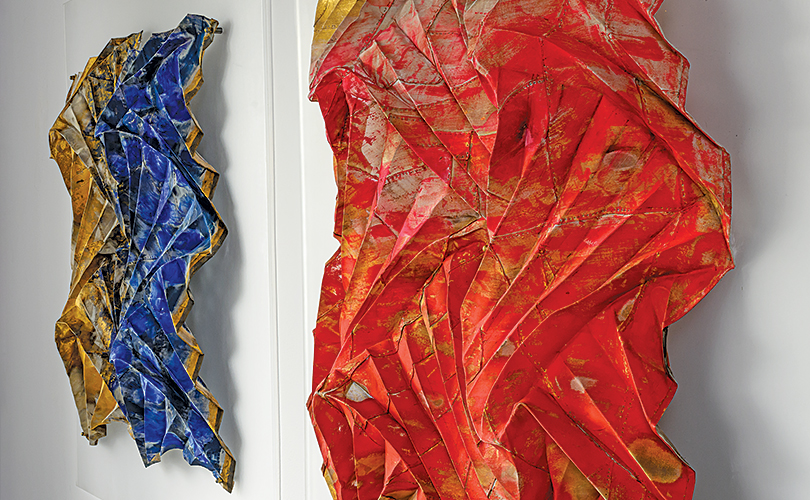
steel mesh, painted, electroplated silver and gold leaf, 31.5” x 31.5” x 4.5” (each), 2021. Photo by Tom Grotta
Born 30 years later in Korea, Jin-Sook So (1950) and Yeonsoon Chang (1950), began as traditional textile makers, then moved to exploring sculptural forms. So creates light-reflecting, three-dimensional works using electroplated and painted stainless steel mesh that evoke silk organza. Chang molds abaca fibers and Teflon mesh into structures that investigate the universe, coated with an eco-friendly resin she developed.
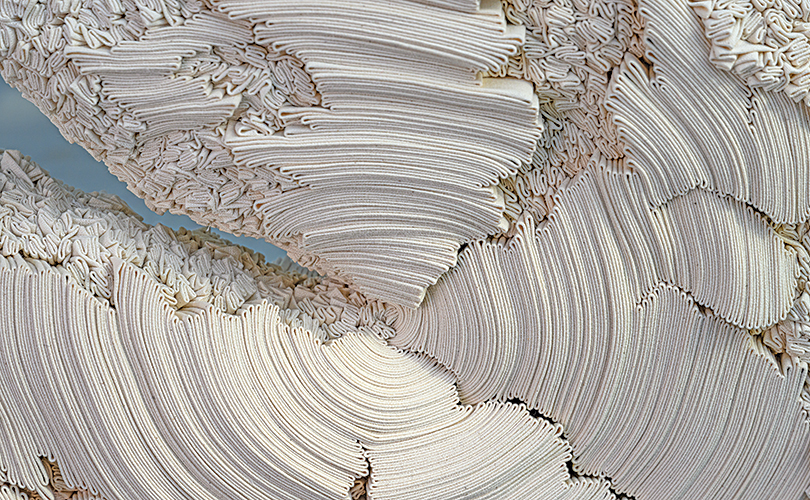
In between those decades, textile sculptors are Simone Pheulpin and Hisako Sekijima, born 1940 and 1944, respectively, renowned innovators. Pheulpin transforms unbleached cotton strips into organic forms reminiscent of bark, ceramics, fossilized rock, coral, or shell, using stainless steel pins instead of stitching or glue — a technique entirely of her own design. For decades, Sekijima has been on what the Victoria & Albert Museum has described as “a journey of radical experimentation,” expanding upon traditional Japanese basketmaking techniques to create inventive non-utilitarian objects, noted for their exploration of volume, mass, and space.
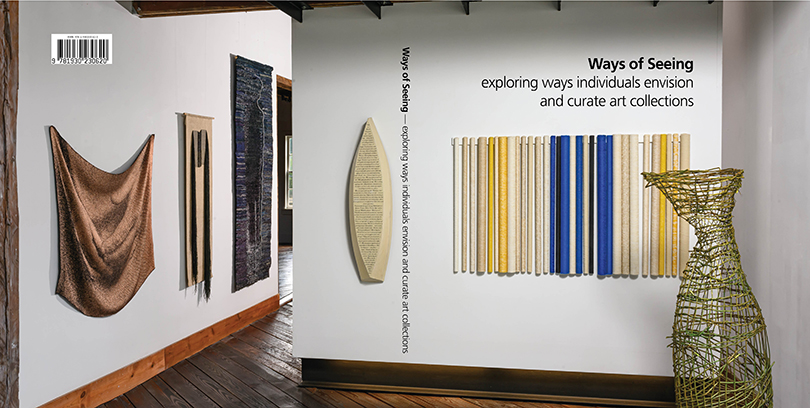
Discover more about these 20 exceptional artists in person at Ways of Seeing or in our catalog. https://store.browngrotta.com/c-54-ways-of-seeing/
Exhibition Details:
Ways of Seeing
exploring ways individuals envision and curate art collections
browngrotta arts
276 Ridgefield Road
Wilton, CT 06897
Gallery Dates/Hours:
Saturday, September 21st: 11am to 6pm [Opening & Artist Reception]
Sunday, September 22nd: 11am to 6pm (40 visitors/ hour)
Monday, September 23rd through Saturday,September 28th: 10am to 5pm (40 visitors/ hour)
Sunday, September 29th: 11am to 6pm [Final Day] (40 visitors/ hour)
Schedule your visit at POSH.
Safety protocols: Reservations strongly encouraged; No narrow heels please (barn floors)

